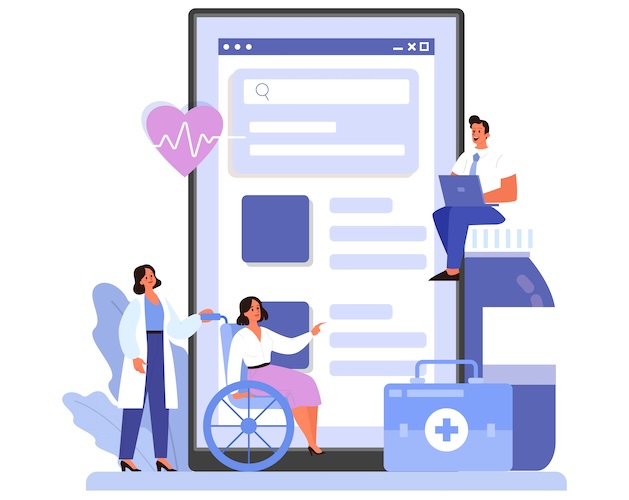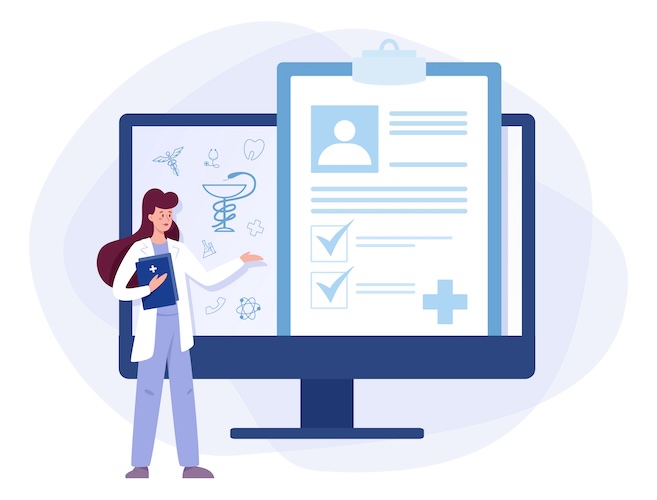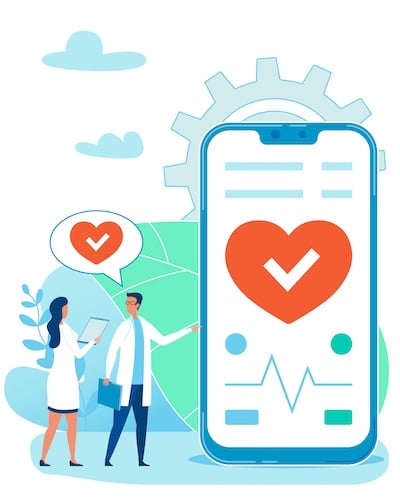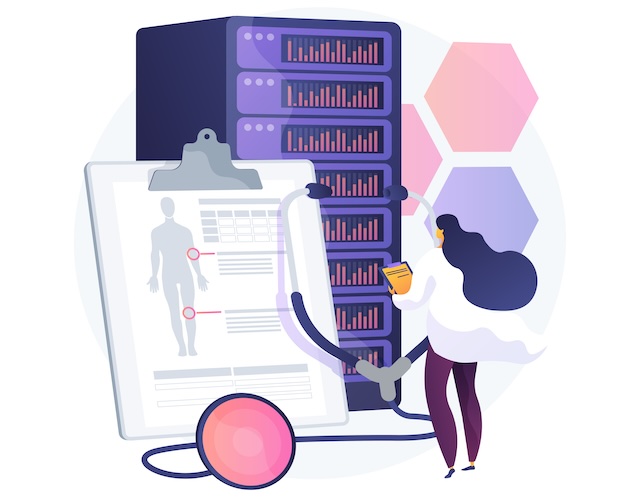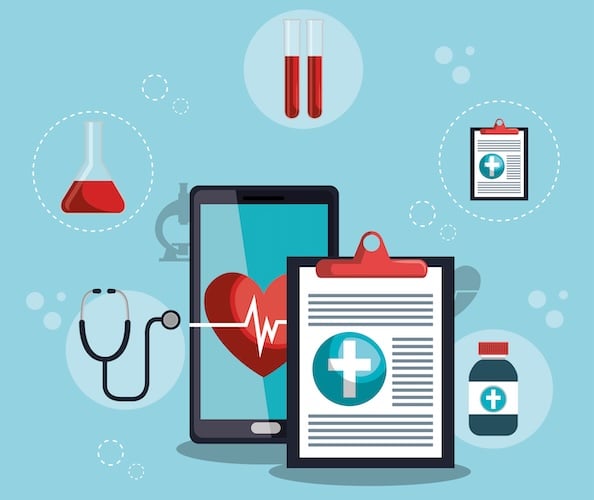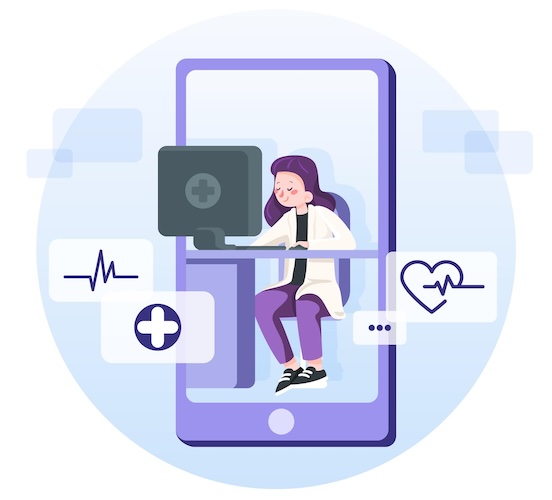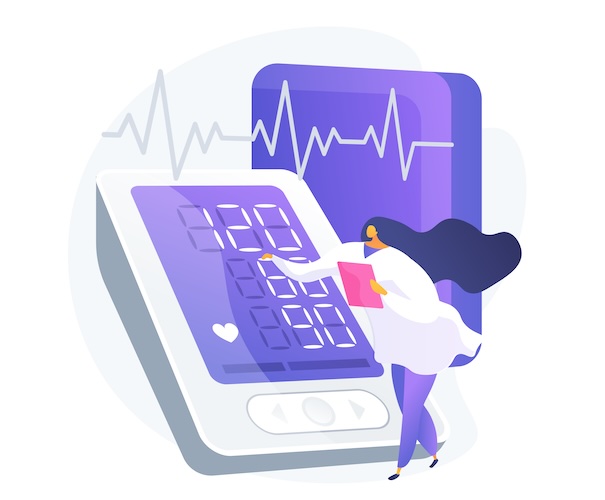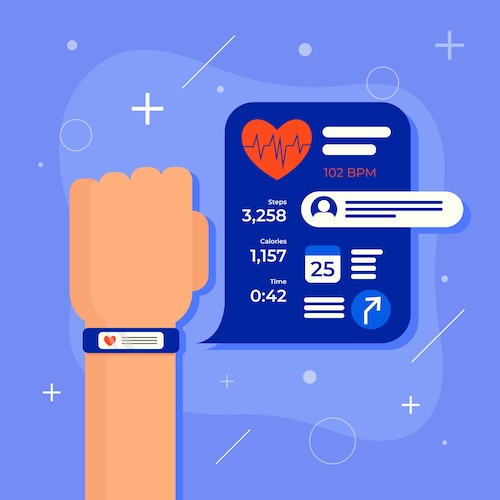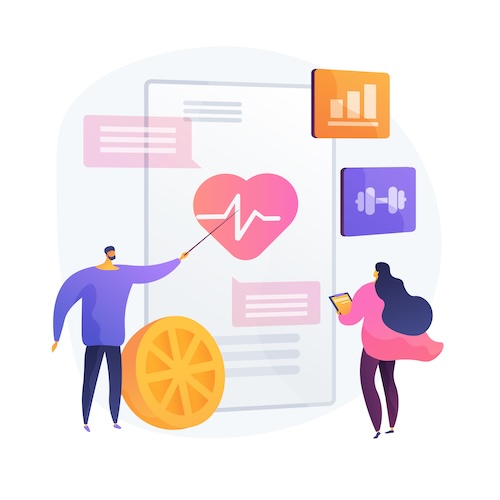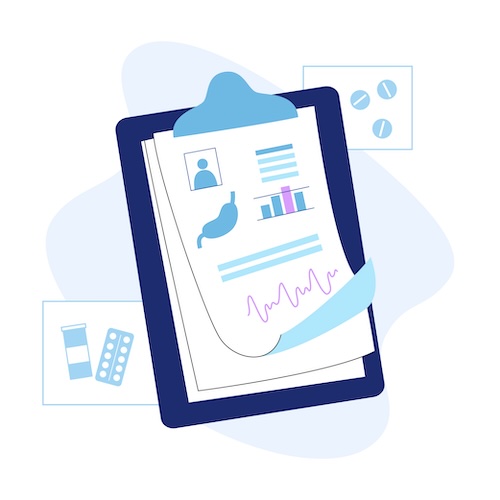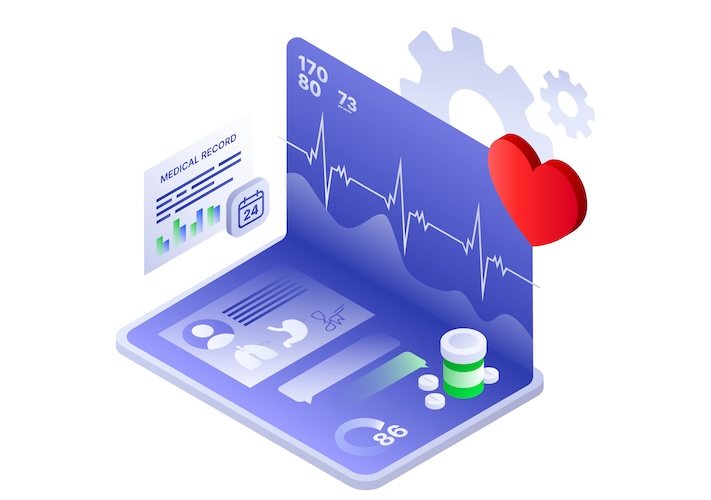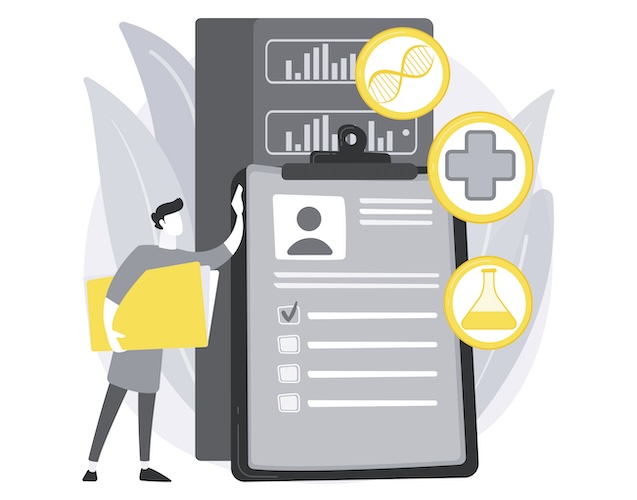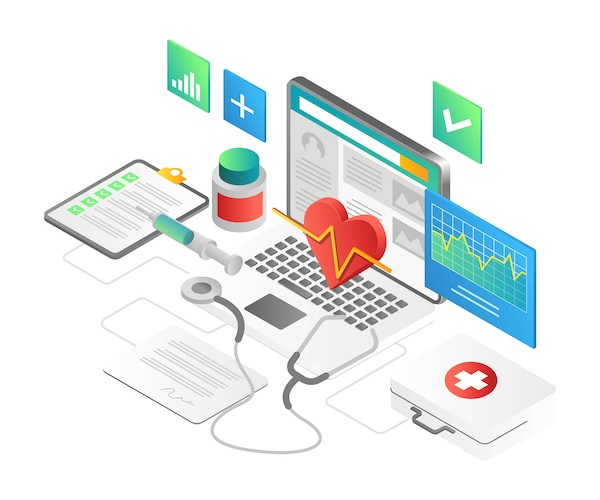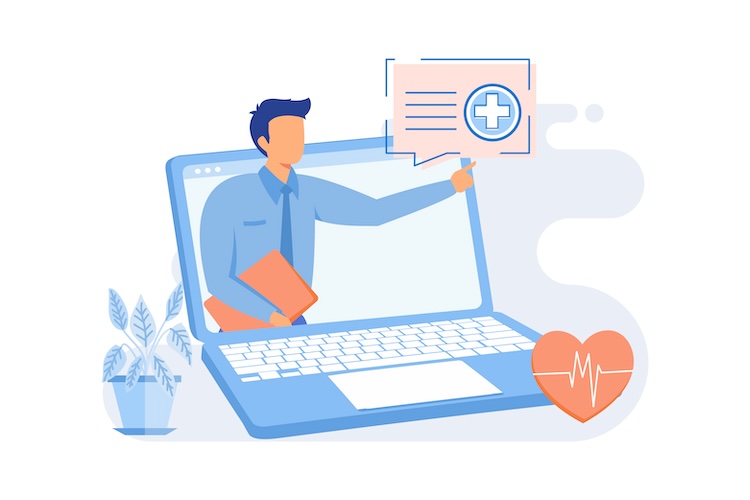Imagine having the power to change the healthcare ecosystem but constantly feeling held back by the technology meant to help you. As a digital health provider organization, you’ve experienced firsthand the challenges of integrating EHR systems into custom code.
Impractical APIs and non-standard data formats overshadow the dream of seamless patient-clinician communication, automatic data updates, and easy appointment retrieval. It’s like the data you need is locked away in a vendor’s EHR vault.
We often hear from healthcare trailblazers, including startups and clinics, looking for innovative care solutions. They’re stuck with traditional EHRs; a headless EHR is the perfect answer to their misery. In this blog, we’ll explain the concept of headless EHR and why it changes lightweight EHR development forever.
Top Takeaways:
- Revolutionizing EHR Development: Understand how headless EHR is paving a new path for lightweight EHR development by unchaining digital health providers from the limitations of traditional EHR systems.
- Unprecedented Flexibility and Efficiency: Discover the power of headless EHR, offering remarkable adaptability and streamlined workflows, enabling healthcare institutions to fine-tune their operations for an improved patient-clinician experience.
- Unlocking Data Accessibility: Learn how headless EHR dismantles the barriers of non-standard data formats and complicated APIs, offering easy access to vital patient data and transforming the healthcare landscape.
Table of Contents:
1. The Evolution of EHR Systems
3. The Technological Shift: Understanding Headless Architecture
4. Why Go Headless? Benefits of Headless EHR
5. Challenges and Considerations in Adopting Headless EHR
6. Key Trends Shaping the Future of Headless EHRs
7. Top 4 Headless EHRs Worth Your Attention
8. The Implementation Process: How to Successfully Implement a Headless EHR
- Step 1: Define EHR Requirements
- Step 2: Buy or Build Decision
- Step 3: Integrate with a Legacy EHR
- Step 4: Test Data Input and Output
- Step 5: Set Up Maintenance Checks
9. Why Topflight Is the Headless-EHR Partner You Want
10. Is Headless EHR the Future of Healthcare Technology?
The Evolution of EHR Systems
Electronic Health Record (EHR) systems have come a long way since their introduction in the 1960s. Initially created to digitize patient records, these systems have evolved into comprehensive platforms for managing and sharing health information across different healthcare providers and services.
With increasing adoption and technological advancements, EHR systems have become more sophisticated, offering features such as data analytics, decision support, and patient engagement tools. However, despite these improvements, traditional EHRs still face challenges such as:
- high integration costs
- siloed health data
- limited flexibility
- outdated, confusing user interfaces
- extra features you may not need
A well-established EHR today spans various platforms, including web and mobile. And yet, despite this ubiquity, providers see it as an inevitable evil that they put up with because it’s certified to accept Medicare and Medicaid.
This is where headless EHR comes in – providing a solution to traditional EHR systems’ limitations while paving the way for new possibilities in healthcare technology.
What is a Headless EHR?
Headless EHR, aka headless electronic health record system, refers to an EHR architecture where the front-end user interface (UI) and back-end data management are decoupled. This means that the UI can be independent of the data and functionality, allowing for more flexibility in accessing and using the system.
In simpler terms, a headless EHR separates the presentation layer from the data layer, allowing for more agile development and easier integration with other systems.
Put simply, a headless EMR is an EHR without a graphical user interface (GUI). In fact, such headless EMR software (at least in its pure form) is useless to clinicians… until they build its “head” – a front end, also known as a GUI for end users.
The Technological Shift: Understanding Headless Architecture
Traditional EHRs follow a monolithic architecture where all components are tightly integrated. This means that any changes or updates to one part of the system can affect other parts, making it challenging to scale and adapt.
In contrast, headless EHRs use a microservices-based architecture. Each function or feature is broken down into smaller, independent services that can be developed, deployed, and updated separately. These services communicate with each other and external applications through APIs (Application Programming Interfaces), providing a more flexible and scalable system.
This architecture shift simplifies development and allows for easier integration with other systems, such as telehealth platforms or patient portals. It also enables faster adoption of new technologies, such as AI and machine learning, to improve decision-making and patient outcomes.
API-First Approach
One of the fundamental shifts that makes headless EMR so transformative is the adoption of an API-first approach. APIs are tools that allow different software solutions to communicate and interact with each other.
To break it down in layman’s terms, an API can be likened to a restaurant menu. It’s a list of commands or requests a developer can make to a headless EHR, similar to how a customer can order different dishes from a menu.
Also Read: A Complete Guide to Healthcare App Development
Just as the menu describes what each dish contains and how it’s prepared, the API provides detailed instructions on what data can be requested, what actions can be taken, and what kind of responses will be received. It also outlines the format in which the data will be delivered and the connectivity protocols to be followed, much like how a menu might list ingredients and preparation methods. In other words, an API serves as a communication protocol that allows different software systems to talk to each other in a language they all understand.
Ideally, a headless EHR’s API includes a “menu” for”both reading and writing data for working with health data in the EHR. This enables seamless integration with other software systems, such as telehealth platforms or patient portals, allowing for a more comprehensive and connected approach to healthcare.
With an API-first approach, developers can access all EHR use cases via API, allowing seamless integration with external applications. Whether it’s a mobile app for patient monitoring or a provider web portal, every action performed in headless medical health record software can be configured to work effortlessly.
Dive deeper into the cost of electronic health records and how it impacts your organization.
Back-end Database Layer
The back-end database layer of a headless EHR system is where all the patient health data is securely stored and managed. Ensuring that this data is both safe and accessible is a complex task that involves adhering to strict regulations such as HIPAA and employing advanced database technologies. The back-end infrastructure includes:
- FHIR-based data model
The database infrastructure of a headless EHR system must support rapid data retrieval and interoperability. For this purpose, a headless EMR ideally adopts the FHIR (Fast Healthcare Interoperability Resources) data model. FHIR is a standard for exchanging healthcare information electronically, making it easier for different healthcare systems to share information.
- secure, HIPAA-compliant servers
Secure, HIPAA-compliant servers are an absolute necessity when it comes to handling sensitive patient data. These servers guarantee the security and integrity of the data being stored and ensure the privacy of the patients, fostering trust among patients and health providers.
Authentication Layer
The authentication layer of a headless EHR system is responsible for verifying the identity of users and applications that want to access the data. This layer ensures only authorized personnel can access and interact with specific patient health records.
- role-based access control (RBAC)
RBAC is a method of restricting system access based on the roles and responsibilities of individual users. This means that different users will have access to only the data and functions that are relevant to their role, ensuring data privacy and security.
- OAuth 2.0/ SMART on FHIR
OAuth 2.0 (Open Authorization) is an industry-standard protocol for authorization used in many applications, including headless electronic health record software. It allows third-party applications to access user data without compromising the security of login credentials.
SMART on FHIR builds upon OAuth 2.0, extending the protocol to fit the specific needs of healthcare applications by adding a layer of security and interoperability, thus enabling authorization mechanisms that comply with healthcare-related regulatory requirements and standards.
Data Import/Export
Another game-changer with headless EHRs is the enhanced ability to import and export data. The decoupled nature of these systems means that data can be easily transferred between different platforms, breaking down the silos often associated with traditional EHRs. This seamless data transfer improves interoperability, providing clinicians with a more complete view of a patient’s healthcare journey and enabling better-informed decision-making.
Dive deeper into virtual doctor app technologies for insights on improving patient outcomes.
Webhooks
Webhooks are another critical feature of headless EMRs. Much like push notifications on your smartphone, webhooks provide real-time updates to external solutions, allowing them to sync the latest health data from the EHR. This ensures that all platforms are working with the most up-to-date information, enhancing the accuracy and relevancy of the data.
Read more about EHR internals in our dedicated blog on how to create an EHR system.
Why Go Headless? Benefits of Headless EHR
The game-changing benefits of headless EHR systems can be best understood by examining their distinctive features and understanding how they provide an edge over conventional EHR systems.
And if you only need the gist and don’t want to go through this list below:
- A digital health provider organization that implements a headless EMR gains a robust platform for delivering custom provider/patient experiences faster and a unified platform for seamlessly expanding its services in the future (by creating/integrating new front ends).
- Companies that build headless EHRs can disrupt the EHR market by delivering new features faster and with fewer resources. This is because there is no need to develop and integrate a dedicated front end (although the back end still requires significant development efforts). Not having to worry about the front end is a huge relief, though.
Flexibility and Scalability
The decoupled architecture of headless EHRs makes them highly flexible and scalable. With no user interface to worry about, developers have more control over the presentation and flow of data. This means they can easily customize and adapt the system to fit their unique needs without having to go through a lengthy development process.
Additionally, headless EMRs can easily handle increased volumes of data or users by adding more servers and databases, ensuring the system runs smoothly even as it grows.
Cost-Effective
Headless EHRs can also save healthcare organizations a significant amount of money. With traditional EHRs, developers must build and maintain the front-end interface, which is often time-consuming and expensive. However, with headless EHRs, developers can focus on building the back-end infrastructure that stores and manages data, saving time and resources.
Check out our EHR integration services
Furthermore, as headless EMRs are highly scalable, organizations can start with a small system and expand it as their needs grow without incurring significant costs.
Improved Interoperability for an Open Platform
Interoperability has been a long-standing challenge in healthcare, with different systems often having trouble communicating and sharing data. One of the most impressive features of headless EHRs is their ability to easily integrate with other solutions. Whether it’s prescribing, lab orders, clinical data exchange, or any other service, headless EHRs can effortlessly plug into these systems.
This creates an open platform where providers can partner with a multitude of external parties, enhancing the scope and quality of care delivery. Alternatively, digital healthcare providers can build whatever front ends best suit their needs without creating a universal front end.
Better User Experience
User experience is crucial in any healthcare system, as it directly impacts the efficiency and satisfaction of healthcare providers. With headless EMRs, users can access the system through their preferred interface, whether a web-based portal, mobile application, voice-enabled devices, or simply PDF files. This means that healthcare providers can use the most convenient and user-friendly platform to access patient data, improving their workflow and productivity.
No Vendor Lock-in
Traditional EHR systems often limit digital health companies to a specific vendor or provider; headless EHRs offer more freedom and flexibility, especially if they support FHIR. With a headless EMR, healthcare providers are no longer tied to a specific vendor or provider. Instead, they can select from a wide array of platforms and adapt the system to suit their unique needs.
Custom Workflows and Automation
Headless EHRs take customization to a new level by enabling providers to create 100% custom workflows. This is achieved by creating necessary front ends and automation, which can also integrate with AI systems or other back-end items like the Internet of Medical Things (IoMT). This versatility promotes efficiency and productivity in healthcare administration.
Modular Front-End Development: The Future of EHR
The future of EHR development lies in modular front-end development, and headless EHRs are paving the way. With a headless EHR system, there’s no need to design, develop, test, and fine-tune a universal front end.
Instead, providers can pick, combine, and set automations between different blocks or even build them from scratch. This modular approach opens the door for continuous innovation and personalization in healthcare technology, making headless EHRs a cornerstone in the future of lightweight EHR development.
Now you understand why numerous digital healthcare providers, prioritizing virtual first care, prefer not to integrate a health app with EPIC EHR or any other major EMR system. Instead, they choose to implement a headless EHR.
Read our guide on how to choose an EHR system.
Challenges and Considerations in Adopting Headless EHR
While headless EHR systems offer unparalleled benefits, there are also some challenges and considerations to keep in mind when implementing them.
Working with a Dev Team
Providers need to work with a development team when implementing a headless EMR and building front ends on top of it. This collaboration is crucial for customizing the system to fit the organization’s unique needs, addressing any potential issues or challenges, and ensuring the successful implementation and operation of the system.
Security Concerns
Headless EHRs, like any digital system, invite potential security concerns. Any transmission of data, especially sensitive patient information, must be safeguarded. This means ensuring that even if someone were to copy post/request data, they would only be granted access if authorized. Implementing robust security measures, such as encryption, access controls, and audit trails, is paramount in maintaining the integrity and confidentiality of patient data.
API Testing
Testing APIs without a front end can be tricky, but it’s essential to ensure the seamless operation of headless EHRs. Developers can use tools like Postman or Swagger to validate APIs’ functionality, reliability, performance, and security.
EHR Certification
Becoming a certified EHR requires taking into account all the requirements from the 21st Century Cures Act. It’s a rigorous process that involves demonstrating compliance with numerous standards and specifications.
Read/Write APIs
All APIs should be read/write, not read-only. This allows for a two-way flow of information, enabling the EHR system to not only retrieve data but also update it. This is vital for maintaining accurate, up-to-date patient records and enhancing the functionality and interoperability of the system.
Complex Data Structure
Each EHR may have its own intricate and distinct data structure consisting of various concepts, primary keys, and pointers. Addressing this complexity requires a deep understanding of the system’s structure and the relationships between different data elements.
FHIR Standard
Not all EHR systems support the FHIR standard, an essential component for ensuring interoperability between different healthcare systems. When implementing a headless EHR, organizations should prioritize solutions that work with the FHIR standard to facilitate seamless data exchange and integration with other systems.
Administrative UI
Even though one of the key advantages of headless EHRs is eliminating the need for a specific front end, there may still be a need for some admin-facing UI. This can help administrators manage and oversee the system more effectively, especially when it comes to tasks such as user management, system configuration, and monitoring.
Key Trends Shaping the Future of Headless EHRs
Headless EHRs are still a trend in their own right, but they are quickly gaining traction and transforming how EHR systems are developed and implemented. Here are some of the trends shaping the future of headless EMRs:
Increased Adoption of FHIR
As mentioned earlier, FHIR is becoming increasingly popular as a standard for interoperability between different healthcare systems. As more EHR vendors and providers start adopting FHIR, headless EHRs will become even more valuable in facilitating seamless data exchange and integration between these systems.
Growing Need for Customization
As the healthcare industry becomes more advanced and personalized, there is a growing demand for custom workflows, integrations, and automations. Headless EHRs provide the perfect platform for this, as they offer unparalleled flexibility and allow providers to create tailored solutions that meet their unique needs.
Integration with Emerging Technologies
Headless EMRs are well-positioned to integrate with emerging technologies such as AI, machine learning, and natural language processing. This integration can help providers extract valuable insights from patient data and enhance decision-making processes.
Incumbent Big EHRs Offering More APIs
With the healthcare industry rapidly advancing, established EHR vendors recognize the need for more flexibility and customization. They are beginning to open up their systems by providing more APIs to facilitate integration, a move that signifies a major shift in the EHR landscape.
Top 4 Headless EHRs Worth Your Attention
This section will delve into the top four headless EHR systems that stand out in the market, providing unmatched flexibility, customization, and integration capabilities.
ZapEHR
ZapEHR is a highly scalable and 100% serverless headless EHR solution designed to accommodate the need for customization in modern healthcare. Offering a modular approach to patient care, Zapehr enables clients to build personalized solutions that promote efficient workflows, enhanced patient experiences, and streamlined operations.
GetHealthie
GetHealthie is a unique headless EHR system that empowers health and wellness organizations to create personalized patient journeys. With its robust API, providers can build their own interfaces, integrations, and automations, improving efficiency and patient outcomes.
Medplum
Medplum is an open-source headless EHR platform designed for developers. It offers a robust set of APIs and a comprehensive data model that facilitates the development of patient-centered applications while ensuring privacy, security, and compliance with healthcare standards.
Canvas Medical
Canvas Medical is a dedicated headless EMR provider that focuses on primary care. The platform offers unique capabilities for building custom front-ends, integrating with other systems, and developing unique workflows. Canvas Medical’s mission is to free clinicians from administrative burdens by enhancing patient care.
The Implementation Process: How to Successfully Implement a Headless EHR
The journey towards implementing a headless EHR is not without its complexities. It’s a path that requires careful planning, savvy technological understanding, and an openness to change traditional workflows. But why is it so intricate, and what are the key areas to focus on? Here’s a quick summary of the major steps to implement a headless EHR:
| Step | Description | Key Activities |
|---|---|---|
| 1. Define EHR Requirements | Clearly outline functional and technical requirements to ensure the system supports all necessary workflows. |
|
| 2. Buy or Build Decision | Decide whether to build a custom EHR or purchase an off-the-shelf solution based on resources and needs. |
|
| 3. Integrate with a Legacy EHR | Seamlessly integrate the new headless EHR with the legacy system to ensure continuity during the transition. |
|
| 4. Test Data Input and Output | Validate the system’s functionality through rigorous testing of data handling capabilities. |
|
| 5. Set Up Maintenance Checks | Establish ongoing maintenance routines to ensure the system’s performance and compliance. |
|
Step #1: Define EHR Requirements
The first step towards implementing a headless EHR is defining your EHR requirements clearly and comprehensively. This includes both the functional features of the system and technical aspects such as FHIR compliance or API format. Begin by identifying and outlining all potential use cases your EHR will need to support. This could range from:
- managing patient records
- charting medical histories
- ordering labs
- prescribing medications
- handling insurance claims
- scheduling and follow-up, yada-yada-yada
Considering the unique workflows and processes of your healthcare organization is crucial. For instance, will you be conducting telemedicine consultations? Are you catering to a specific patient population with unique needs? Mapping out these scenarios will help you understand the features and customizations your EHR system should possess.
Defining these requirements upfront streamlines the selection process and ensures your headless EHR system can adapt to your evolving needs, ultimately leading to improved efficiency and patient outcomes.
Step #2: Buy or Build Decision
After defining the EHR requirements, the next crucial decision is whether to build or buy a headless EHR system. While each approach has its merits, the decision largely depends on your healthcare organization’s unique needs and capabilities.
Choosing to build your own EHR using open-source platforms like Medplum gives you complete control over the system’s functionality. This path allows for deep customization, enabling you to create an EHR system tailored to your specific workflows and processes.
However, it’s important to note that building your own EHR requires significant time, resources, and technical expertise. The development process can be complex and may require a thorough understanding of healthcare standards and compliance requirements.
Related: To Buy or Build a Telehealth Solution?
On the other hand, buying an off-the-shelf headless EHR like zapEHR or GetHealthie may be a more feasible option if you lack the resources or technical know-how to build your own system. These ready-made solutions offer robust functionality and can be quickly deployed, accelerating your digital transformation journey. These options also provide a level of customization, allowing you to adapt the system to your needs. However, off-the-shelf solutions may not offer the same degree of flexibility as building your own EHR.
Step #3: Integrate with a Legacy EHR
Integrating a headless EHR system with a legacy EHR is often a necessity during the transition period. Clinicians and other staff might not be ready to abandon a familiar system altogether, and it may still serve valuable functions during the development and implementation of the new platform.
A successful EHR integration requires a deep understanding of the data structures and standards used in both systems. This involves mapping data fields accurately, ensuring the seamless transfer of patient and clinical data between systems. It’s critical to use interoperability standards like HL7 and FHIR to facilitate this process, ensuring that data exchange meets regulatory requirements and maintains the integrity of the information.
Furthermore, data migration from the legacy system to the headless EMR is a crucial aspect of this integration. This involves transferring the existing patient records and other pertinent data to the new system while ensuring data accuracy and integrity.
Read more on EHR data migration.
The integration phase may also necessitate training for the staff to make the transition smoother and continue their tasks with minimal disruption.
Step #4: Test Data Input and Output
Testing is a vital phase in the headless EHR implementation process, ensuring that the system functions as expected and meets the defined requirements. In particular, testing the data input and output capabilities of your headless EMR is paramount.
Begin by formulating a series of test cases covering all the potential use cases you identified in the requirements stage. These test cases should include a wide range of scenarios, from routine patient record updates to more complex tasks like managing insurance claims.
Data input testing should ensure that the system correctly captures and stores data entered by users. This might include manual data entry by clinicians, such as patient details, medical histories, and prescriptions, as well as automated data inputs, such as lab results or radiology reports.
Data output testing, on the other hand, looks at how the system retrieves and displays stored data. This involves confirming that the data is accurately retrieved and displayed in the correct format, whether as part of a patient’s record, a physician’s report, or an insurance claim.
In addition, it’s crucial to stress-test the system. This involves loading the EHR with data to its maximum capacity and monitoring its response to ensure it can handle high volumes of data without compromising on performance and speed.
Step #5: Set Up Maintenance Checks
Once your headless EHR system is live, setting up regular maintenance checks is essential to ensure its continued performance and stability. This involves routinely monitoring and evaluating the system’s functionality, detecting any potential issues, and rectifying them promptly.
Implement automatic system checks, focusing on key operational areas such as data input/output, system speed and responsiveness, interoperability with other systems, and compliance with healthcare standards. Regular audits can help identify inefficiencies in the system, enabling you to optimize processes and improve system performance over time.
Reporting is another crucial aspect of maintenance checks. Generate regular reports on system performance, including metrics such as system uptime, error rates, data integrity, and user satisfaction. These reports provide a quantitative measure of the system’s performance, helping you assess its effectiveness and reliability.
Why Topflight Is the Headless-EHR Partner You Want
Building on a headless stack isn’t just wiring FHIR endpoints—it’s juggling OAuth scopes, HL7 fall-backs, and a vendor “app-store” checklist that still reads like War and Peace. Topflight has done that dance for both the hospital heavyweights and the new breed of API-first vendors such as Medplum, Canvas, ZapEHR, and GetHealthie, so we already know where the potholes are—and how to pave them.
What makes us different
-
Headless-ready connectors – Our library of SMART-on-FHIR launch flows and HL7 bridges snaps into newcomers like Medplum or Canvas just as easily as Epic or Athena, so you’re never locked to one data silo.
-
Compliance baked in – HIPAA, SOC 2, RBAC, and audit trails ship from sprint one; your security team sees check-boxes, not road-blocks.
-
Build-fast playbook – Low-code prototyping, agile sprints, and end-to-end ownership mean your custom front end is in pilot while competitors are still begging for API keys.
Is Headless EHR the Future of Healthcare Technology?
In conclusion, the rise of headless EHR systems marks a significant shift in the healthcare technology landscape. As healthcare organizations strive to deliver patient-centric care while facing increasing regulatory and financial pressures, the need for flexible, customizable, and scalable EHR systems has never been more critical.
The benefits of a headless EHR system are undeniable – from seamless integration with other clinical applications to enhanced workflow efficiency, improved interoperability, and greater flexibility in customization. It allows for a more modular approach to EHR implementation that puts the focus on functionality and user experience.
And mind you — all of that while getting:
- faster time to market
- nimbler development budget
- full freedom to use health data with any front ends and services
Starting with a lightweight EHR is a boon to v1c companies that envision rapid growth and want to avoid being trapped in a walled garden of traditional, rigid EHR systems.
If you are pondering the idea of implementing a headless medical health record system, talk to our experts today.
Frequently Asked Questions
Can ChatGPT replace human interaction completely?
While ChatGPT has made significant strides in automating several aspects of healthcare administration, it cannot entirely replace human interaction. It serves as a tool to enhance provider-patient communication, assist in administrative tasks, and streamline processes. However, critical decisions such as diagnoses, treatment planning, and complex patient interactions still require a human touch and clinical expertise. Remember, the main aim of integrating AI like ChatGPT into healthcare is to augment human capabilities, not replace them
Can GPT-4 Turbo effectively handle multilingual patient queries and communication in a healthcare setting?
Yes, an excellent feature of the GPT-4 Turbo is its capacity to understand and generate content in multiple languages. This feature is particularly beneficial in a healthcare setting, where clear communication is essential. It can translate complex medical information into various languages, making healthcare more accessible and understandable for patients worldwide. However, as with any AI, the quality and accuracy of the language translation should be validated by human professionals for critical or precise medical information.
What does the introduction of voice and image inputs mean for healthcare interactions?
The introduction of voice and image inputs opens up new dimensions for healthcare interactions. Patients can now interact with healthcare chatbots using their voice or share medical images for analysis, enhancing the diagnostic and consultation process. This is especially beneficial for individuals with visual impairments and those who prefer speaking instead of typing.
